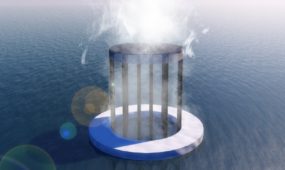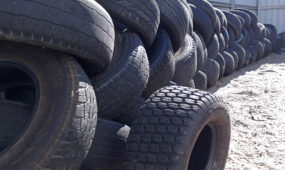'World's fastest' cycling helmets to debut at Tour de France
Research & Development
A NEW helmet – touted as the fastest in road cycling – will make its pro tour debut at the 2016 Tour de France on the heads of ORICA-GreenEDGE riders.

Sign up to receive notifications about new stories in this category.
Thank you for subscribing to story notifications.
A NEW helmet – touted as the fastest in road cycling – will make its pro tour debut at the 2016 Tour de France on the heads of ORICA-GreenEDGE riders.
The Scott Cadence Plus was developed by researchers at the University of Adelaide in South Australia and is streamlined to ensure less drag and increase ventilation.
Project Leader Richard Kelso said that from an aerodynamics perspective, the Scott Cadence Plus performed better than any of the other leading helmets on the market.
“It’s faster because of its shape. The materials are extremely smooth and are moulded to produce surface details that help to control the airflow and that is one of the secrets that help make it a very low drag helmet,” he said.
“It’s a premium helmet, high-level safety, excellent performance – It definitely adds an extra element of comfort.
“Against some of the top helmets it could provide about a 0.2 metres advantage but against some other high quality helmets you can even get a larger distance of up to two metres. If you want to cut your drag it’s a brilliant way of doing it.”
The helmets have been trialled by Australian cycling team ORICA-GreenEDGE, which includes explosive sprinter Caleb Ewan (pictured below), four-time Tour Down Under winner Simon Gerrans, experienced tour campaigner Daryl Impey and South Australian rider Alex Edmondson.
They are also expected to be worn by riders at the Rio Olympics.
The Scott Cadence Plus features a unique double entry ventilation system with vents at the front and rear.
It is also designed to have small ridges on the top of the helmet to increase the aerodynamics of the helmet.
“Our goal was to produce a helmet design with the lowest drag possible, but also to ensure the rider's head is well cooled and, above-all, well protected,” Assoc Prof Kelso said.
“Our research showed that you didn’t need to have vents all over. If you had good-sized vents at the front, back and good-sized ducts inside you not only get good cooling, in fact you get better cooling – you have more flow through to the back.
“It’s got a high level of safety. It’s got the MIPS (Multi Directional Impact Protection System) layer inside and that reduces the effect of impact and the acceleration of your brain when you have a large impact. It is a helmet that could potentially keep you alive when many others can’t.”
The Cadence Plus and Centric Plus helmets were tested at the University of Adelaide’s wind tunnel facility using a full-sized mannequin and heated mannequin head.
The helmets are products of Swiss company Scott Sports and will go on sale later this year.
Scott Sports Senior Product Manager John Thompson said the company had a strong partnership with the University of Adelaide team, which had been instrumental in developing successful cycling products for the Swiss corporation.
“We couldn’t be more proud and excited to be delivering these new helmets to our athletes and to have Associate Professor Kelso and the team at the University of Adelaide on our side,” he said.
“Our goal was to deliver the very best performance advantage to our professional road and mountain bike racers.
“The results speak for themselves, with both new helmets exceeding our expectations and outperforming the competition in controlled wind tunnel testing.”
Jump to next article



